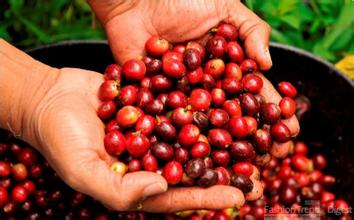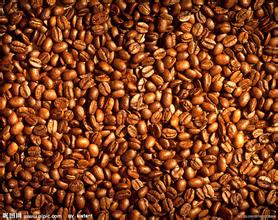Flavor Description of Brazilian South Minas Coffee Bean Grind Scale Processing Taste
Flavor Description of Brazilian South Minas Coffee Bean Grind Scale Processing Taste
Coffee production has gradually become a science since the introduction of coffee trees from Guyane française in 1720. Before 1990, the Brazilian government strictly controlled the coffee industry, with both severe interference and price protection measures, and the state has always implemented minimum price protection measures for farmers, resulting in coffee overproduction. At one point before World War II, 78 million bags were left in stock and had to be burned or submerged
Other types of Brazilian coffee, such as Rio, Parana, etc., can be produced in large quantities without too much care. Although the taste is rough, it is a kind of inexpensive coffee. Due to its distribution throughout Brazil, the solid quality varies, and there are its own standards (NO.2~NO.8 according to the number of impurities, NO.13~NO.19 according to the size of beans, divided into six grades according to taste). Almost all Arabica varieties are of good quality and stable prices, the most famous being "Santos de Brazil", which has been a necessity of blended coffee since ancient times and is familiar to the public. Recently, the rating of "Tolma Cup" is also very high.
Brazil has many large farms, operating endless coffee plantations, they use machines to harvest, and use machines to dry, automated efficiency is very high, as if coffee as a general agricultural material, completely abandoned flavor and disregard. As a result, many specialty coffee companies simply do not sell Brazilian beans, lest they demean themselves. Brazilian santos still occasionally appear in select coffee shops, but they are bourban santos rather than the cheaper flat bean santos. Santos is a descendant of the Bourbon species, hence the name of the Port of Santos exit. This coffee tree in the first three or four years of the beginning of the fruit, the beans produced small and curved, excellent flavor, known as "Bourbon Santos." After that, the beans become larger, flat shape, no longer curved, become "flat bean Santos", flavor has been much less than before. In Taiwan, Brazilian coffee can be seen everywhere, but mostly flat beans Santos, in fact, Brazil still has good quality coffee beans, will be sold to the market under its own name, no longer known as "Brazilian coffee". Some farms still retain the old bourbon seed, the raw beans are small in size, curved, red in the center line, and marked with a red center. Bourbon beans taste full, rich aroma, like drinking old wine in general, it is worth a try
The coffee is now cultivated in new places inland, thanks to nature, and Panama, which rose to fame after the war as a new coffee producer in Brazil, is still inferior in quality compared to what is produced in São Paulo because of its inferior natural conditions. Now the northern part of Sao Paulo state, Liberon, Bredo, and Fulanca, etc., with the interior of the Mojiana line as the best quality Brazilian coffee production areas
In addition, Mogiana (Mogiana, north of Minas del Sur) in the northeast of Sao Paulo province is also dominated by shade bourbon, which is tied with Serrado and Minas del Sur as Brazil's three major boutique producing areas. Famous estates in Minas del Sur include Esperanza and Montegues. The famous "Datella Manor" and "Highland Manor" groups also have several large estates in Serrado and Morgana. These four winning estates of the Cup Test became the treasures of Minas del Sur, Serrado and Mojiana

Important Notice :
前街咖啡 FrontStreet Coffee has moved to new addredd:
FrontStreet Coffee Address: 315,Donghua East Road,GuangZhou
Tel:020 38364473
- Prev

The method of Grinding Calibration for describing the Flavor of Brazilian Yellow bourbon Coffee Bean Variety
Brazilian Yellow Bourbon Coffee Variety Flavor description Grinding scale treatment Old bourbon Coffee is grown in some estates in the Serrado district of Minas Greais state in southeastern Brazil. These estates, such as Capin Branco and Vista Allegre, grow old varieties of bourbon coffee
- Next

Regional varieties of Tanzania coffee beans produced by AAA flavor description
In 1980s, most coffee sales in Tanzania shifted from auctions to being sold directly to coffee cups made in the Songea region of Tanzania Coffee Management Council, reflecting the common characteristics of coffee in the north. However, the coffee produced by Kibo is due to the flavor loss during transportation that we mentioned.
Related
- Detailed explanation of Jadeite planting Land in Panamanian Jadeite Manor introduction to the grading system of Jadeite competitive bidding, Red bid, Green bid and Rose Summer
- Story of Coffee planting in Brenka region of Costa Rica Stonehenge Manor anaerobic heavy honey treatment of flavor mouth
- What's on the barrel of Blue Mountain Coffee beans?
- Can American coffee also pull flowers? How to use hot American style to pull out a good-looking pattern?
- Can you make a cold extract with coffee beans? What is the right proportion for cold-extracted coffee formula?
- Indonesian PWN Gold Mandrine Coffee Origin Features Flavor How to Chong? Mandolin coffee is American.
- A brief introduction to the flavor characteristics of Brazilian yellow bourbon coffee beans
- What is the effect of different water quality on the flavor of cold-extracted coffee? What kind of water is best for brewing coffee?
- Why do you think of Rose Summer whenever you mention Panamanian coffee?
- Introduction to the characteristics of authentic blue mountain coffee bean producing areas? What is the CIB Coffee Authority in Jamaica?

